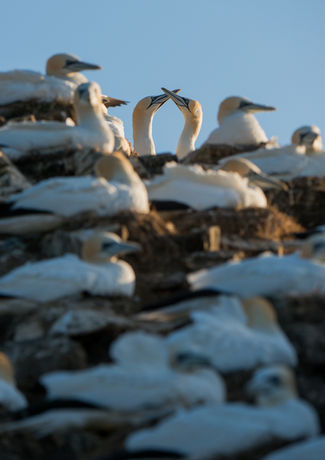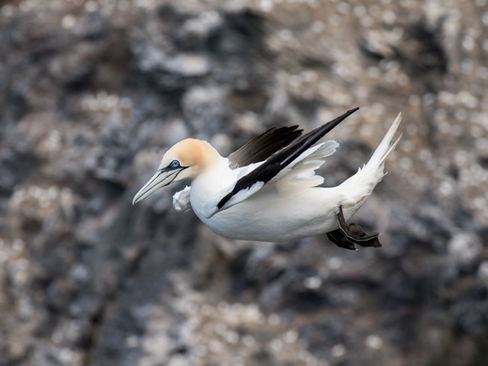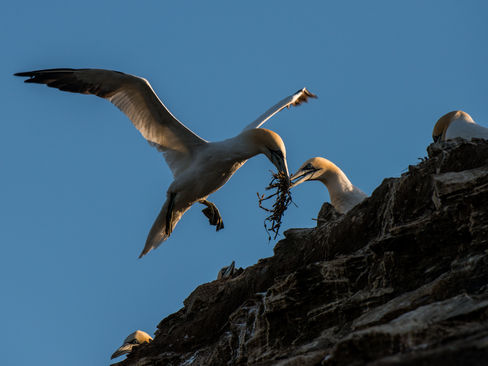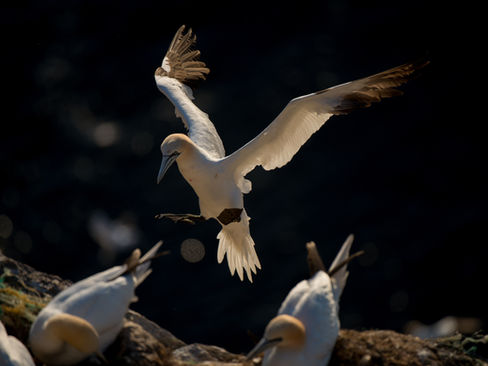top of page

Gannet - Morus bassanus
Gannet - Morus bassanus
Shetland is home to two amazing gannet colonies; Hermaness and Noss. With many seabirds struggling in the UK, gannets seem to be doing the opposite and both colonies are growing each year. They come to these cliffs to nest during the spring and summer, creating an incredible spectacle.

Continue below

Gannets in Flight

Continue below

Gannet Colony
Gannets are social birds and nest in large colonies. Although social, they are still very territorial when it comes to their nest and will guard it against other gannets if they come too close. Each nest is only half a metre away, just out of pecking distance of one another. Instead of spreading all over the cliffs, the colony is fairly compact and stays very close together.
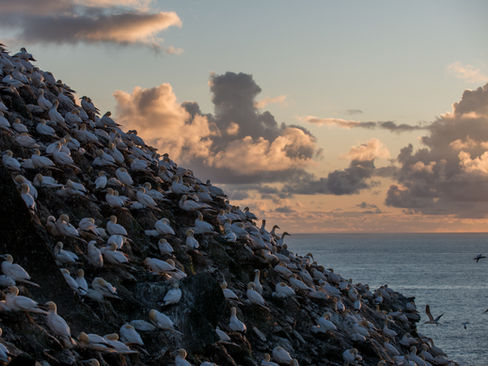
Continue below

Low Key Gannets
Gannets are a great subject to use low key photography on. It's a simple technique but when used correctly can create some bold images that really stand out. All these images were taken in the day using strong sunlight and underexposing in the camera by around 2-3 stops, creating this effect. This makes anything dark go completely black and the whites exposed.

Continue below

Gannet Plastic
Although the gannet population is increasing, they are under threat from us and our rubbish. The ocean is getting littered with plastic, nylon rope, fishing line and endless amounts of pollution. This waste congregates and is sometimes eaten by gannets causing a variety of problems. They collect material from the sea to line their nest, normally grass, seaweed and other natural materials, but more and more are now returning with items like rope and plastic. This can cause gannets to get tangled and stuck on their nest, often resulting in death. Others can get it wrapped around their wings or feet, preventing them from flying or foraging. Not good news.
Most gannet nests now contain some type of man-made waste which can be harmful to them and we drastically need to clean up our seas and prevent more of this from happening.

bottom of page







